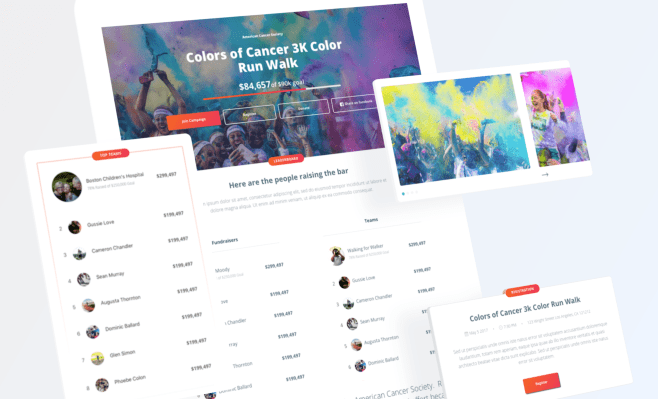After acquiring CrowdRise over a year ago to double down on fundraising for non-profits, GoFundMe is today taking the wraps off a new product that will supercharge the service.
CrowdRise by GoFundMe is a new version of the site that signifies the next step of development for GoFundMe, as it starts to work with larger organizations (and by association, larger campaigns and funding totals). It will let non-profits create campaigns more quickly, and follow them with better analytics, social media management and event planning tools.
The bigger picture for GoFundMe is that, in a world where there are relatively limited ways of monetising non-physical content online — others include advertising and subscriptions — it wants to build and dominate one of the notable and lucrative alternatives: donations — or as GoFundMe likes to describe it, the “giving layer of the internet.”
Non-profit organizations are a very lucrative part of that graph: according to the Chronicle of Philanthrophy in November 2017 (via Forbes), the largest non-profits generated $108 billion from private sources in the previous year, and digital platforms have become a major component of how that money is collected.
“CrowdRise by GoFundMe is designed to help nonprofits succeed, and it’s an important milestone as we continue to build the giving layer of the internet,” said Rob Solomon, CEO of GoFundMe, in a statement.
To date, GoFundMe has been one of the very big winners in the surge of fundraising services that have emerged online, leveraging the power of social media and the phenomenon of campaigns raising outsized money when they go viral. With a focus specifically on helping individuals collect money for good causes, GoFundMe has raised over $5 billion in donations for those using its platform.
But it faces a sea of competitors. They include other pure-play funding platforms like YouCaring (which itself recently picked up Generosity.com from Indiegogo), and behemoths like Facebook, which itself has focused a lot of attention also on serving the nonprofit sector.
So, GoFundMe is taking its non-profit business up another gear, building a more professional face to cater to businesses (in this case, non-profit businesses).
Co-founded by the actor Edward Norton, producer Shauna Robertson, and Robert and Jeffrey Wolfe in 2009 while trying to raise money for the Maasai Wilderness Conservation Trust, CrowdRise has carved out a strong name for itself in non-profit funding services.
Over the years, it has worked with organizations like the Boston Marathon, New York City Marathon, Chicago Marathon, Ironman and Tough Mudder; as well as the American Cancer Society, Red Cross and UNICEF — some 10,000 charities in all. But in what is largely a game of scale, the aim here is to ramp up those numbers even more.
GoFundMe has recast CrowdRise as a more nimble version of what it already was, but also a more professional version. Nonprofits can now set up campaigns on their own, and run them with a more full suite of services. These include analytics to measure how the campaign performs; social media tools to help amplify the campaign; and event management tools to let nonprofits set up registration, ticketing and other aspects of a live event.
Given that GoFundMe is competing for nonprofits’ business against the likes of Facebook — which at its heart is a giant in marketing and advertising — it’s notable to me that the new feature set in CrowdRise is reminiscent of what you might find across marketing platforms.
One thing that the new CrowdRise doesn’t seem to have — not yet, anyway — is pricing transparency. A look at the site now doesn’t have any links to how much it costs to set up and run a full campaign on the platform.
GoFundMe has been described to us before as a cash cow, a vehicle for “printing money” because of how well its formula has worked. The company has used that momentum to try out new business models, and last November it dropped the five percent platform fee it was charging personal fundraisers, opting instead for a tip-based system not unlike that of competitors like YouCaring.
